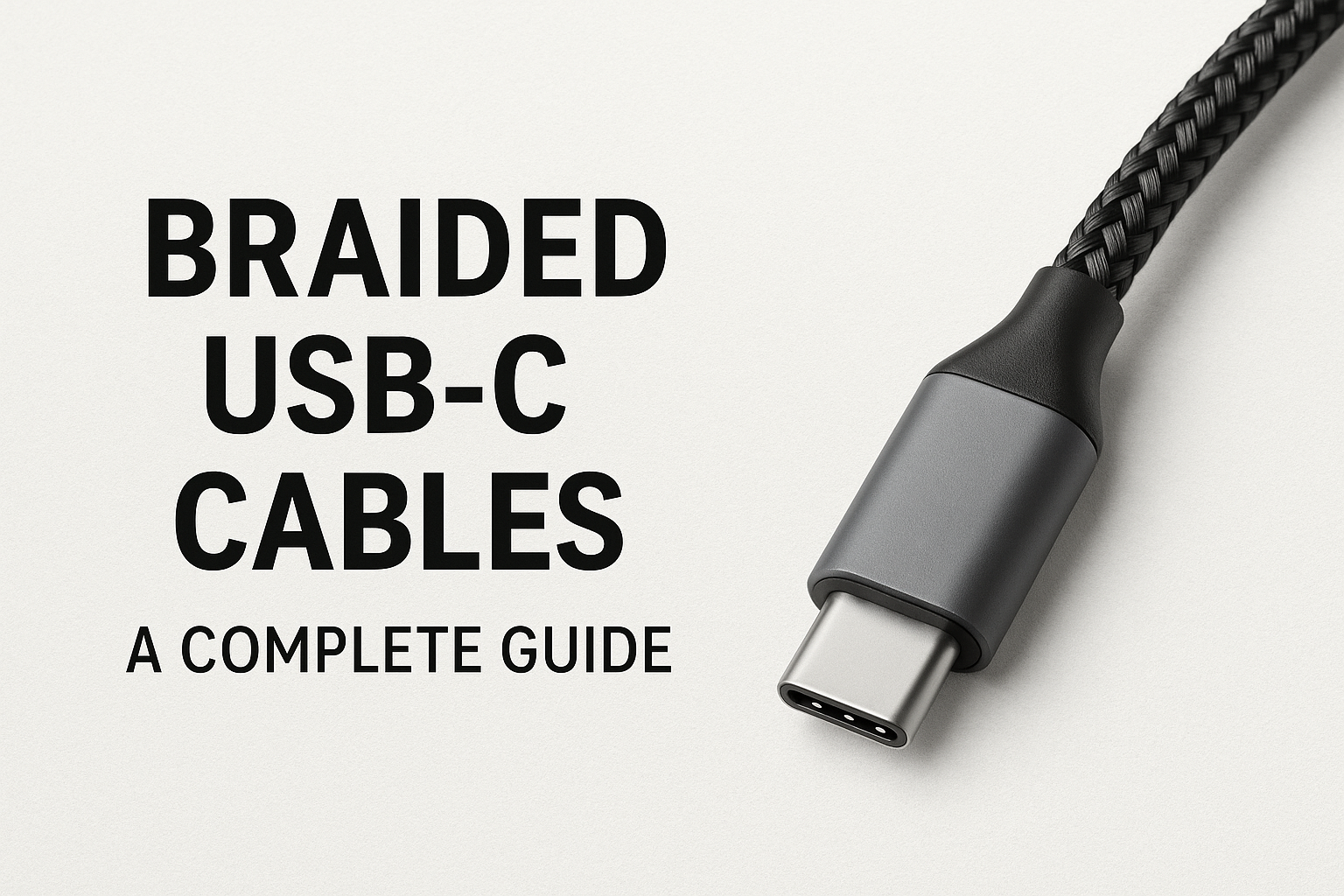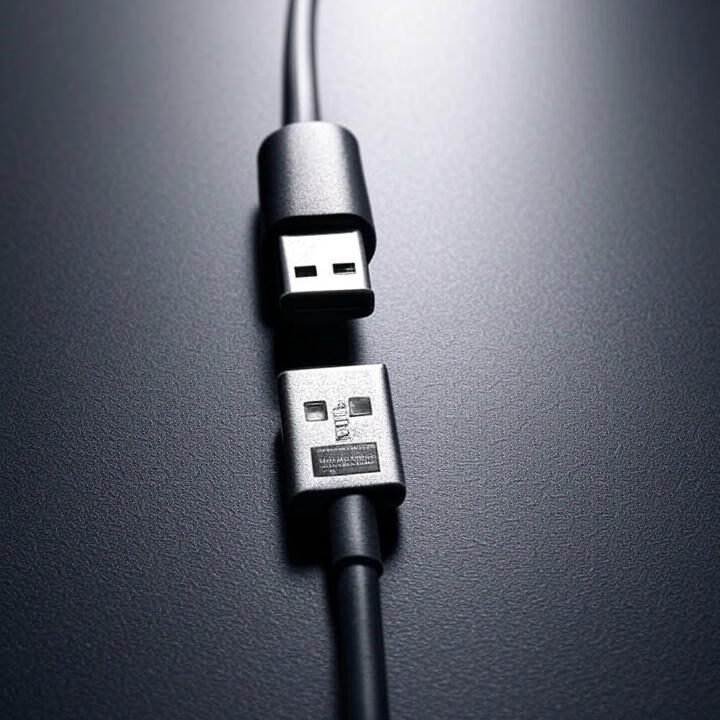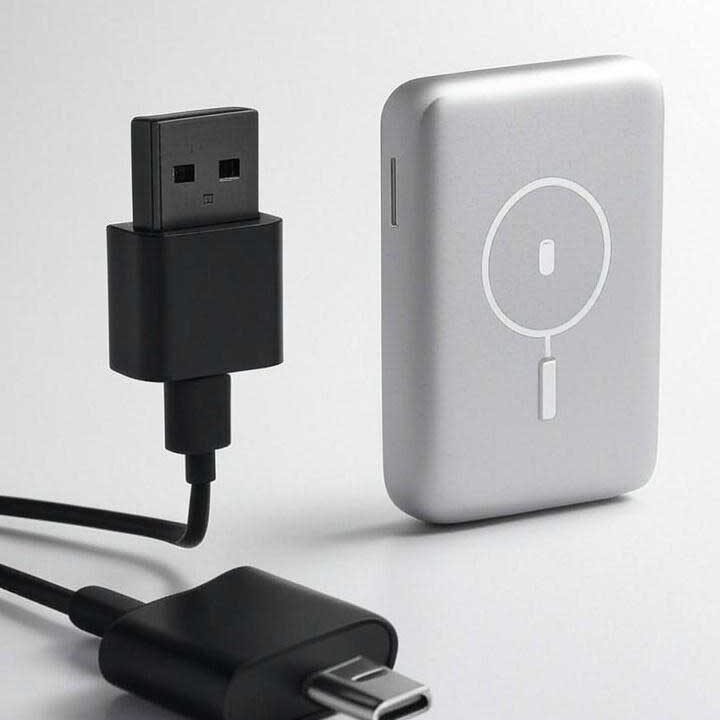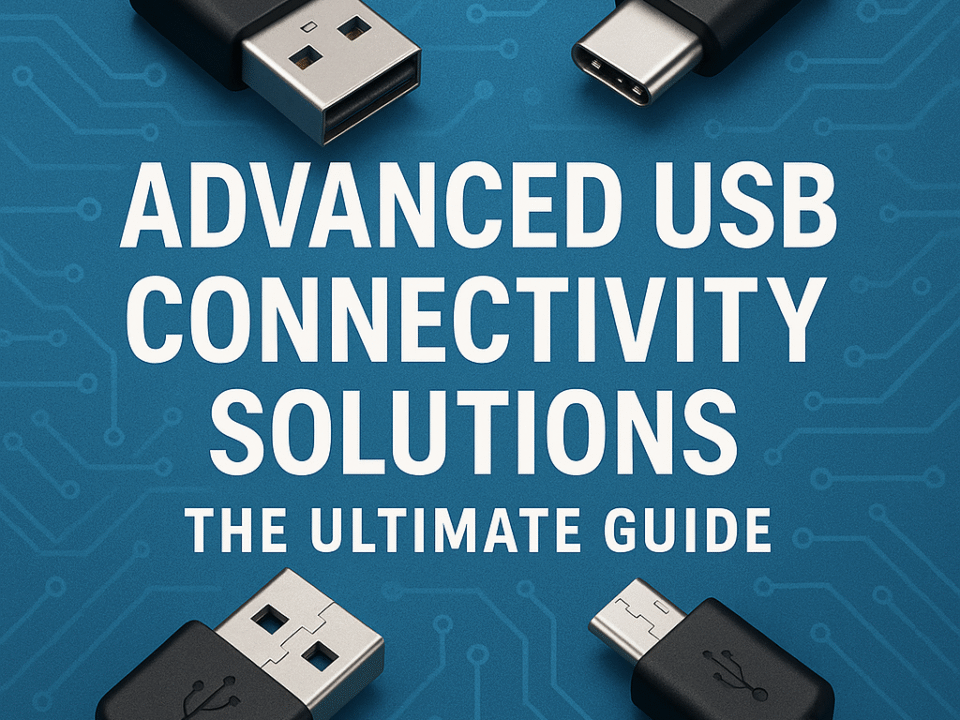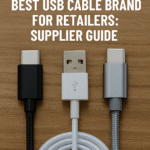
Best USB Cable Brand for Retailers: Supplier Guide
2025-05-27
Best USB Cable Supplier: A Guide for Retail Buyers
2025-05-29Braided USB-C Cables: A Complete Guide
We’ve all been there: annoying frayed cables, slow charging when you’re in a hurry, or a mess of cables in your bag. It’s frustrating when cables that are supposed to charge your important devices become a source of annoyance. If you’re tired of flimsy, unstable charging solutions, it may be time to consider an upgrade. Braided USB-C cables are here to help, offering an attractive alternative. Not only do these cables look unique, but they also offer a real boost in durability and performance. This article will explore why they’re a smart choice for your tech gear and help you understand their benefits.
What is a braided USB-C cable?
You’ve probably seen them before—they look sturdy, with a braided outer layer. But what exactly is a braided USB-C cable? And what’s so special about it? Let’s find out.
Braided USB-C Cable Definition and Key Features
The heart of a braided USB-C cable is that it has an outer layer of interwoven wires (usually nylon) wrapped around the inner wires. This braided cable design isn’t just for show, it has some very useful features. First, it adds an important layer of protection. Think of it as armor for the cable, making it more resistant to the daily wear and tear that can cause ordinary cables to fray or break. This means they last longer, which is always a plus.
Not only are these braided cables tough, they also combine excellent flexibility and strength. And let’s be honest, they usually look great, too! Many braided cables come in a variety of colors and patterns, allowing you to pick a cable that matches your style while still providing top-notch performance. So you get durability, reliability, and a statement piece.
How are they different from standard cables?
So how do these braided cables compare to the standard (usually plastic-coated) USB-C cables you’re more familiar with? The biggest difference you’ll notice is in durability. Standard cables have a sleek PVC coating that’s prone to kinking, breaking, and tangling. Braided cables, on the other hand, are generally more resistant to damage from bending and twisting, and they’re also less likely to get tangled in your bag.
While standard non-braided cables are often cleaner and cheaper for everyday, light use where the cable doesn’t move around a lot, braided cables really stand out in more demanding environments. The superior protection of braided cables makes them a smart choice if you frequently plug and unplug, travel, or simply need a cable that can withstand more movement. They also often have a more premium feel and appearance, which is a nice addition to your tech.
Why Choose Braided USB-C? The Benefits
When it’s time to buy a new USB-C cable, you have more options than ever before. Beyond making sure it fits your device, you’ve probably seen a wide range of options, from basic plastic-coated cables to more premium-looking braided cables. If you’ve ever hesitated, wondering if these braided cables are truly better or just a cosmetic upgrade, you’ve made the right question! In fact, the move to braided cables is more than just a trend; it’s a response to our growing reliance on devices that need to charge quickly and reliably day after day.
Think about your daily life: your phone needs a quick charge before you leave the house, your laptop needs to stay connected during an important meeting, or your tablet is your go-to entertainment device when you’re on the go. In all of these situations, the humble cable plays a vital role. Fragile or unreliable cables can lead to slow charging, interrupted data transfers, or even worse, fail completely when you need them most. That’s where braided USB-C cables come in handy, offering a range of compelling enhancements over standard cables. They’re designed for users who demand more from their accessories—more durability, higher performance, and a hint of modern style.
Enjoy Superior Durability and Longer Lifespan
One of the biggest benefits of braided USB-C cables is their superior toughness. Think about how often your cables are bent, twisted, or shoved into your bag. Regular cables can easily fray or break under this stress, but braided cables are more durable and more resistant to damage from bends and tangles. This sturdy construction, which often uses materials like nylon or other strong fibers to weave the inner wires, means they’re better able to handle everyday use. Ultimately, this superior durability means the cable will last longer, saving you money and energy in the long run. Investing in a durable cable means you’re less likely to lose your device due to a charging cable failure.
Increased flexibility, tangle-free
If you’re tired of fighting a tangled mess of cables every time you reach into your bag or drawer, braided cables may be the game changer. They’re less prone to tangling than traditional rubber cables, thanks to the properties of the braided jacket. This increased flexibility means they wrap more neatly and are generally easier to manage.
In addition to practicality, “braided cables often come in a variety of colors and patterns, appealing to users who prefer a sleeker look.” So not only do you get an easy-to-use cable, you can choose one that matches your personal style or complements your devices, helping you organize your tech accessories in a more fashionable way.
Appreciate its sleek, modern look
Let’s be honest, aesthetics are important, especially when it comes to the tech we use every day. Braided USB-C cables generally score high on the styling front. As Cable Wholesale points out, “braided cables have a more professional look and are more visually appealing to users who value the aesthetics of their tech accessories.” The textured surface of a braided cable can give it a higher-end feel and a more sophisticated look than regular plastic or rubber.
This stylish look will perfectly complement your stylish smartphones, tablets and laptops. For tech users who value a holistic and stylish look, choosing a braided cable, perhaps paired with KEUTEK’s fast wall chargers and other accessories, may be a small detail, but it can make a huge difference to your overall experience.
Get Better Signal Quality and EMI Protection
Besides looking great and lasting, braided USB-C cables also offer superior performance. The secret is in their construction. Braided cables are better able to resist EMI (electromagnetic interference) and physical damage due to their flexible, interwoven structure. EMI can affect charging speeds or data transfer, causing annoying instabilities.
By providing an extra layer of shielding, the braid helps maintain a clearer, more stable signal. This means you’re more likely to experience consistently fast charging and reliable data syncing, which is essential for devices that rely on working or staying connected. This EMI protection is a key factor in ensuring your devices work uninterrupted, ensuring your devices can run as efficiently as you do.
The Tech Insider: Performance and Construction
Braided USB-C cables come in a variety of looks that are obvious, but it’s what’s inside that really makes them stand out. What a cable is made of, how it’s constructed, and even how well it dissipates heat is critical to its performance and longevity. Understanding this “under-the-hood tech” can help you understand why choosing a premium braided cable is a smart move to keep your devices powered and connected. For anyone who relies on electronic devices every day—whether you’re a professional trying to meet deadlines, an explorer exploring an off-grid world, or a family making sure their family stays connected and prepared—there’s power in knowing what’s under the hood of their gear.
It’s more than just connecting to power; it’s about reliable power, efficient data transfer, and the peace of mind that comes with durable equipment. When you choose a cable, you’re choosing a lifeline for your device. So, we’re taking a deep dive into the components and engineering that make high-performance braided USB-C cables the best choice. We’ll explore what they’re made of, how fast they actually transfer, and how they manage the heat that comes with high power. This knowledge will help you choose the right cable based not just on looks, but on the solid performance and build quality that really matters to your demanding lifestyle.
What are they made of? Materials & Construction
The real beauty of durable braided USB-C cables is what they’re made of. For many of our cables, we’ve used advanced components designed to support high-speed charging technology. That means they’re more than just beautifully packaged; they’re engineered from the inside out for top performance. The most striking feature is the braided nylon exterior, which doesn’t just look good. This material is more resistant to abrasions, kinks, and daily wear and tear than standard rubber or PVC coatings. Think about how many times you plug, unplug, and reel a cable—the braided construction provides an extra layer of protection, ensuring the fine wires inside are protected and able to work properly for longer. This rugged construction is key to their longevity.
How Fast Do They Charge and Transfer Data?
When we talk about performance, speed is usually the first thing that comes to mind, and rightfully so. Braided USB-C cables, especially those built with quality in mind, are designed to support fast charging by handling higher power transfers. This means your phone, tablet, or even laptop can return to full charge faster when paired with a compatible fast wall charger. Beyond charging, these cables are also powerful sources of data. Modern USB-C to USB-C cables can manage incredible data transfer speeds, sometimes up to 40Gbps, and offer up to 240W of charging power. While not all braided cables can reach these maximums (it depends on their specific design and your device), a well-made braided cable will ensure you get efficient power and data flow, which is essential when syncing large files or needing to charge quickly on the go.
Keep it cool: Understand heat dissipation
An often overlooked aspect of cable performance is heat management. Charging and transferring data, especially at high speeds, generates heat. If the cable can’t dissipate heat effectively, it can lead to performance degradation or even damage to the cable or device over time. The construction of braided cables also plays to their advantage in this regard. The braided nature of braided cables allows for more airflow around the cable than a solid, smooth plastic cable. This improved ventilation helps dissipate heat more effectively. Better heat management is especially important during sustained high-powered activities, such as rapidly charging a fast portable power bank or transferring large video files. Keeping it cool helps maintain optimal performance and contributes to the overall safety and lifespan of your charging device.
As we become more concerned about our environmental footprint, the demand for sustainable products is growing, and tech accessories are no exception. While the “braid” itself is primarily for durability and aesthetics, the push for green manufacturing practices is impacting the entire life cycle of products like USB-C cables. Braided cables already contribute to sustainability in a way—their increased durability means they don’t need to be replaced as often, which reduces e-waste. This resistance to wear and tear and everyday wear and tear is good for both your wallet and the planet.


